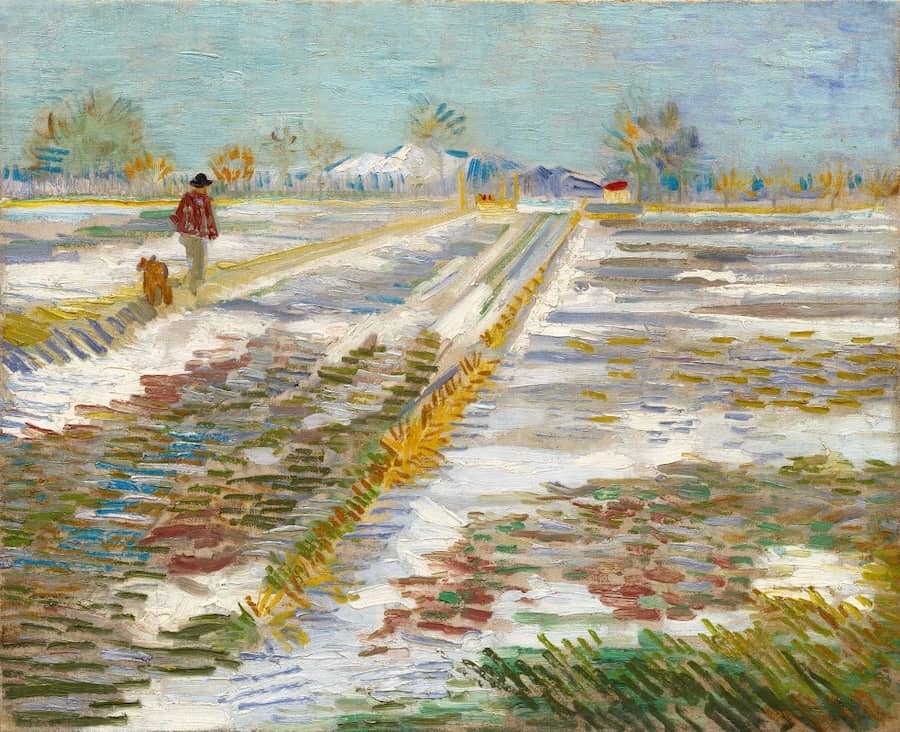Landscape with Snow, 1888 by Vincent Van Gogh

"Second nature", indeed, might be an apt term for van Gogh's artistic output in 1888. With sovereign assurance, he used what he had learnt in Paris, moulded it, and gave it a quality of impressive monumentality. His assurance came from his conviction that he was establishing a connection with the art he admired so much and with the exemplary lifestyle of the Orient. As if he was aware that this new harmony (which he maintained for nine months) was precarious, he tried painting anything and everything. Every day was a day full of work. His regret at having so few contacts was soon outweighed by his enthusiasm at his own creativity. Van Gogh's major works (in terms of both quantity and quality) were done in Aries - classics in the true sense of the word, artworks that had put all that was crude and immature behind them. There, and there alone, he knew his definite place in a universal concept of artistic endeavour, in a style that went far beyond his own individual self. No doubt that knowledge was of his own making - and by the end of the year he would have to admit the error of his fictive ways.
When Van Gogh arrived in Arles in February 1888 the ground was covered with snow due to record cold temperatures. At the time of this painting the snow had begun to melt. It's thought that this painting is one of his first paintings made in Arles. In a letter to his brother Theo about February 24, 1888, Van Gogh describes having completed three paintings in as many days, one of them, Landscape with Snow.
Van Gogh, an avid collector of Japanese art woodcut prints, may have been inspired by the prints with snowy scenes by Katsushika Hokusai. the profound confidence that he would be able to make his Japan come true granted him those months of real creative energy.
Fun Fact of Landscape with Snow
Landscape with Snow is own by Guggenheim Museum. In September, 2017, President of the United States Donald Trump asked the museum if they could borrow the painting to decorate their living quarters in the White House's Executive Residence. The Guggenheim's Artistic Director and Chief Curator, Nancy Spector, declined. Instead she offered the White House America, a 2016 18K gold toilet sculpture by contemporary Italian artist Maurizio Cattelan, but that installation did not occur. At September. 2019, the same toilet offered to Trump was stolen from Churchill's birthplace.




















